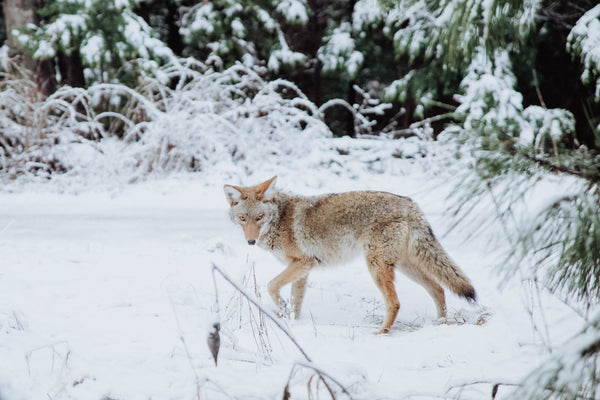
Tipps zum Locken von Kojoten:
- Seien Sie kreativ. Die meisten Kojoten werden bis zum Beginn des neuen Jahres alles gesehen und gehört haben. Es besteht die Möglichkeit, neue Geräusche zu erzeugen oder die Position zu verändern. Sie können den Klang und die Position Ihrer Kojote-Rufe ändern, indem Sie sich merken, welche Methoden Sie verwendet haben.

- Konzentrieren Sie sich bei der Auswahl der Töne für Ihren elektronischen Lockruf in der Spätsaison mehr auf die Geräusche der Kojoten. Auf dem Weg von der Selbsterhaltung zum Überleben der eigenen Art fühlen sich Kojoten mit Heulen, Kampf- und Fortpflanzungsgeräuschen wohler.

- Sei geduldig . Die meisten Kojoten, die auf Heulen reagieren, sind vorsichtiger als zu Beginn der Saison. Dies bedeutet, dass sie sich langsamer bewegen. Es kann sich lohnen, 10 bis 15 Minuten länger am Stand zu warten.
- Beginnen Sie mit vier bis fünf weiblichen Einzelgeräuschen, die in den nächsten zwei bis drei Minuten wiederholt werden. Nach weiteren zwei Minuten Stille können Sie mit einigen Brunftgezwitschern und weiblichem Winseln beginnen. Sie können dies bis zur 10-Minuten-Marke fortsetzen. Spielen Sie eine zweiminütige Gruppenserenade, nachdem Sie die 10-Minuten-Marke abgewartet haben. In den restlichen 20 Minuten rollen Sie in einen aggressiven Kojotenkampfklang. Nach zwei Minuten Ruhe können Sie den Kampf mit mehreren lauten Heulen beenden. Wenn Sie das nächste Mal einen Kojote antworten hören, wissen Sie, wo Sie hingehen müssen, wenn Sie ihn dazu bringen, noch zwei Minuten lang ruhig zu sitzen.

- Seien Sie auf Weitschüsse vorbereitet. Ein Zielfernrohr oder ein Absehen zeigt Ihnen die Reichweite Ihrer Kugel auf größere Distanzen an. Später in der Saison können Kojoten in einer Entfernung von 300 Yards oder mehr hängen bleiben. Schauen Sie sich einfach den Ruf an. Dadurch haben Sie eine größere Chance, Kojoten zu erlegen.
